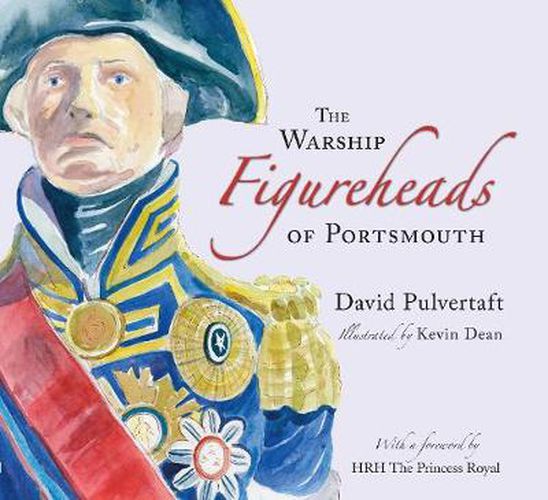Readings Newsletter
Become a Readings Member to make your shopping experience even easier.
Sign in or sign up for free!
You’re not far away from qualifying for FREE standard shipping within Australia
You’ve qualified for FREE standard shipping within Australia
The cart is loading…






Figureheads were carved for the bows of British fighting ships from the early sixteenth century until the start of the twentieth, formalizing the ancient tradition of sea-farers in earlier times. Warship names were selected within the Admiralty and it was then the task of the figurehead carver to submit a design that represented the name to the satisfaction of the Navy Board. The National Museum of the Royal Navy in Portsmouth has the biggest collection of British warship figureheads on display in the world. Close by are two still attached to the bows of their ships, the wooden HMS Victory (1765) and ironclad HMS Warrior (1860). David Pulvertaft’s book reveals the history of warship figureheads, those in the Portsmouth collection being lavishly illustrated with watercolour paintings by Kevin Dean. The informative narrative provides not only a description of the collection but also examines the context of each figurehead against the life of its ship and the background of the carver who created it. David Pulvertaft, a retired admiral, first became interested in warship figureheads during his long naval career and has spent some 15 years researching the subject. He has collaborated with Kevin Dean on this project for two years with the support of the Royal Naval Museum. Kevin Dean is a Southsea-based artist who has illustrated numerous books and designed for a wide range of products, from textiles to tableware. He has always been fascinated by figureheads and their wonderful graphic qualities.
$9.00 standard shipping within Australia
FREE standard shipping within Australia for orders over $100.00
Express & International shipping calculated at checkout
Figureheads were carved for the bows of British fighting ships from the early sixteenth century until the start of the twentieth, formalizing the ancient tradition of sea-farers in earlier times. Warship names were selected within the Admiralty and it was then the task of the figurehead carver to submit a design that represented the name to the satisfaction of the Navy Board. The National Museum of the Royal Navy in Portsmouth has the biggest collection of British warship figureheads on display in the world. Close by are two still attached to the bows of their ships, the wooden HMS Victory (1765) and ironclad HMS Warrior (1860). David Pulvertaft’s book reveals the history of warship figureheads, those in the Portsmouth collection being lavishly illustrated with watercolour paintings by Kevin Dean. The informative narrative provides not only a description of the collection but also examines the context of each figurehead against the life of its ship and the background of the carver who created it. David Pulvertaft, a retired admiral, first became interested in warship figureheads during his long naval career and has spent some 15 years researching the subject. He has collaborated with Kevin Dean on this project for two years with the support of the Royal Naval Museum. Kevin Dean is a Southsea-based artist who has illustrated numerous books and designed for a wide range of products, from textiles to tableware. He has always been fascinated by figureheads and their wonderful graphic qualities.